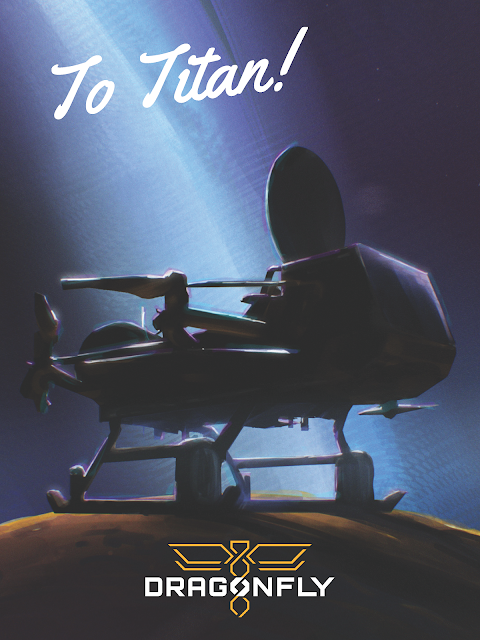
NASA’s only mission to the surface of another ocean world, Dragonfly is designed to investigate the complex chemistry that is the precursor to life. The rotorcraft vehicle will be built & operated by the Johns Hopkins Applied Physics Laboratory (APL) in Laurel, Maryland. The spacecraft will be equipped with cameras, sensors and samplers to examine areas of Titan known to contain organic materials that may have previously mixed with liquid water now frozen on the icy surface.
A rotorcraft is a kind of aircraft that rely on rotary blades. Rotary-wing aircraft have a unique advantage over fixed-wing aircraft, such as helicopters, as they use a primary rotor that creates lift. This means they can hover, allowing them to perform operations that require more precise control such as ground surveillance, assessment etc. among others.
Saturn's moon Titan is the second most largest moon in our solar system and stands out as the sole moon in the solar system, with a thick atmosphere. And, NASA's goal is to explore the surface of any icy moon that could potentially harbor ocean and Titan is perfect candidate for this.
 |
| Artist’s Impression: Dragonfly Descends View From the Surface of Titan as Dragonfly Descends Toward a Landing Spot. (Image Credit: Nasa/johns Hopkins Apl/steve Gribben) |
 |
| Dragonfly Field Demo - Flight Control and Navigation, May 2018. (Image Credit: Johns Hopkins APL) |
NASA's rotercraft Dragonfly will weigh approximately 450 kg (990 lb) and be packaged inside a heat-shield of 3.7 m (12 ft) diameter. It would then use its vertical takeoffs and landings (VTOL) capability to move between exploration sites. It would then use its vertical takeoffs and landings (VTOL) capability to move between exploration sites.
Titan is similar to the very early Earth, and can provide clues to how life may have arisen on Earth and similar to our planet, Titan's atmosphere is also made of nitrogen, with a tiny component of methane, according to NASA. Titan also has a cycle similar to Earth's, in which liquids shower from clouds.
The Dragonfly dual-quadcopter will explore a variety of locations on Titan making multiple flights. In under an hour, Dragonfly will cover tens of miles or kilometers, farther than any planetary rover has traveled. With one hop per full Titan day (16 Earth days), the rotorcraft will travel from its initial landing site to cover areas several hundred kilometers away during the planned two-year mission. Despite its unique ability to fly, Dragonfly would spend most of its time on Titan's surface making science measurements.
Unable to use solar power due to Titan's hazy atmosphere, Dragonfly will be powered by a Multi-Mission Radioisotope Thermoelectric Generator (MMRTG), which is also used by the Curiosity rover on Mars. MMRTG is a Radioisotope Thermoelectric Generator (RTG) — a space nuclear power system that converts heat into electricity using no moving parts.
Flight, data transmission, and most science operations will be planned during Titan's daytime hours (eight Earth days), giving the rotorcraft plenty of time during the Titan night to recharge.
The Dragonfly rotorcraft would provide the capability to explore diverse locations to characterize the habitability of Titan's environment, investigate how far prebiotic chemistry has progressed, and search for biosignatures indicative of life based on water as solvent and even hypothetical types of biochemistry.









 IndianWeb2.com is an independent digital media platform for business, entrepreneurship, science, technology, startups, gadgets and climate change news & reviews.
IndianWeb2.com is an independent digital media platform for business, entrepreneurship, science, technology, startups, gadgets and climate change news & reviews.
No comments
Post a Comment